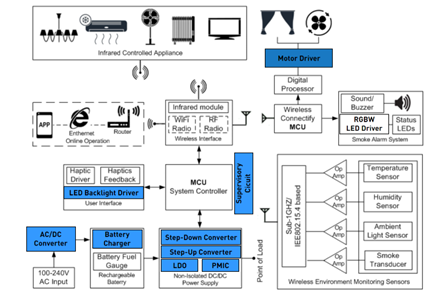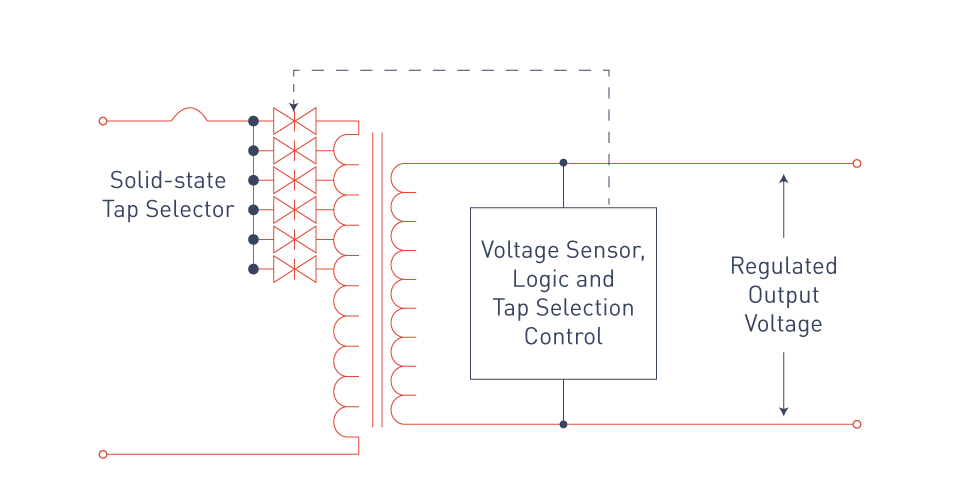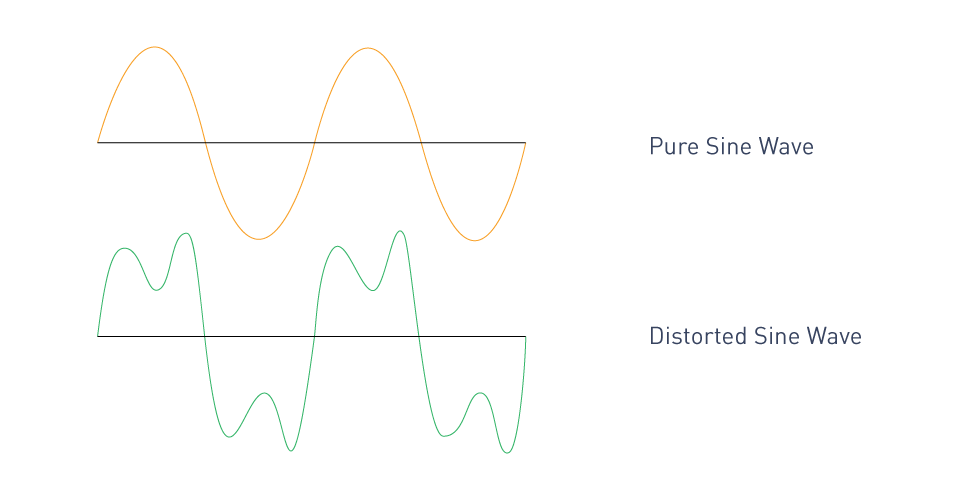Environmental Considerations of Large-Scale AC Power Generation and Distribution
Alternating Current (AC) power systems have been widely used for large-scale energy generation and distribution, serving as a foundation for modern industrial and technological growth. However, this extensive deployment raises important environmental concerns that must be acknowledged and addressed. The environmental impact of AC power systems includes a variety of elements, including emissions connected with conventional power generation and the ecological implications of infrastructure development.
Impact of Conventional Power Generation: The vast majority of the world's electricity is generated by alternating current power systems using fossil fuels such as coal, natural gas, or oil. The combustion of fossil fuels emits considerable amounts of greenhouse gases, including carbon dioxide (CO2) and methane (CH4), which contribute to global warming and climate change. Furthermore, the extraction and transportation of fossil fuels can cause environmental deterioration, such as habitat destruction, water contamination, and poor air quality. Conventional power plants' environmental footprint includes thermal pollution of water bodies used for cooling, which can harm aquatic environments.
Impact of Renewable Power Generation
The shift to renewable power sources such as wind, solar, and hydroelectric systems is transforming the energy landscape, with far-reaching consequences for ecosystems and biodiversity. While incorporating these technologies into AC power systems helps to reduce dependency on fossil fuels, it also poses unique environmental issues that must be properly controlled.
Wind Energy and Wildlife
Offshore Wind Farms: Offshore wind farms can affect marine life in a variety of ways, while being praised for their high energy output and little land usage. Noise from the installation and maintenance of these turbines may interfere with marine mammals' ability to communicate and navigate. Furthermore, fish habitats and seabird patterns may be impacted by the physical presence of turbines and the maintenance activities that go along with it.
Onshore Wind Farms: Wind turbines on land can be dangerous to bird populations. Turbine blade collisions can happen to birds, especially raptors and migrating species. Although the effects of noise and ground vibration on local wildlife habitats vary greatly depending on the region, research is still being done to try to lessen the harm.
Solar Energy and Recycling Challenges
The fast expansion of solar electricity has raised worries regarding solar panel end-of-life management. As solar panels reach the end of their working life, they generate a significant amount of waste. Recycling solar panels is difficult because of the existence of toxic components such as cadmium and lead in some earlier designs, as well as the economic viability of recycling procedures. Similarly, batteries used in solar energy storage, particularly lithium-ion batteries, pose recycling issues and significant environmental risks if not handled correctly.
Battery Storage and Lithium Mining
Battery storage devices are increasingly being used to control the intermittent nature of renewable energy sources such as wind and solar power. These systems frequently use lithium-based batteries, which, while effective, raise environmental problems due to lithium mining. The extraction of lithium can cause water pollution and depletion, soil contamination, and consequences on local wildlife, emphasizing the importance of sustainable mining practices and improved battery recycling procedures.
Hydroelectric Power and Environmental Impact
Hydroelectric power, one of the earliest renewable resources, has important environmental implications, particularly in the construction of dams. Dams can cause widespread floods, significantly altering local ecosystems, displacing communities, and disturbing land and aquatic species habitats. Sedimentation behind dams can damage water quality and shorten reservoir lifespans, hurting both human and environmental health downstream.
Environmental Benefits of Renewable Energy
Despite these obstacles, renewable energy provides significant environmental benefits. Renewable energy sources reduce greenhouse gas emissions significantly by lowering reliance on fossil fuels, so contributing to climate change mitigation. Furthermore, renewables protect finite natural resources and promote biodiversity by minimizing pollution and habitat devastation caused by coal, oil, and natural gas exploitation. The ongoing development of renewable technology and initiatives for reducing environmental impacts is critical to ensuring an energy future that is environmentally friendly.
Transmission and Distribution Infrastructure: The installation and maintenance of AC power transmission and distribution infrastructure have environmental consequences. Transmission lines, substations, and other infrastructure projects can disrupt ecosystems, fragment habitats, and endanger wildlife, particularly birds. The usage of significant volumes of materials in infrastructure, such as metals and insulating fluids, can lead to resource depletion and pollution if not handled correctly. Efforts to reduce the environmental impact of infrastructure include optimizing route selection, using modern materials and technologies, and applying best practices in building and maintaining it.
Electromagnetic Fields (EMF) and Noise Pollution: AC power systems produce electromagnetic fields (EMF) and noise, which have caused environmental and health concerns. While scientific consensus is that EMF levels connected with power lines and electrical equipment do not pose major health risks, continuing research and monitoring are required to address public concerns and maintain safety. Noise pollution from substations and other facilities can have an impact on neighboring populations and wildlife, necessitating mitigating techniques including sound barriers and improved equipment design.
Sustainable Practices and Innovations: Addressing the environmental implications of large-scale AC power generation and distribution necessitates a diverse approach that includes the use of cleaner generation technology, investments in renewable energy, and energy saving measures. Innovations in AC power system design, such as smart grid technology, have the potential to improve grid flexibility, energy efficiency, and environmental impact. Sustainable methods, such as responsible resource management, habitat conservation, and pollution control, are critical to reducing the environmental impact of AC power systems.
The Economic Aspects of AC Power
In addition to being a technological marvel, the widespread use of Alternating Current (AC) power systems has had a substantial economic impact on the world. The financial implications of AC power include the cost of energy, the investment in infrastructure, and the wide range of effects it has on consumers and businesses. Gaining knowledge of these aspects helps one better understand the intricate relationship that exists between economic development and electrical power systems.
Infrastructure Investment
The public and corporate sectors have invested a significant amount in the implementation and growth of AC power infrastructure. In order to transport electricity from producers to end consumers, it is required to build power producing facilities, transmission lines, substations, and distribution networks. The geographic region serviced, the population density, and the degree of industrialization all affect how much money is invested. Infrastructure investment in AC power is essential to the economic development of emerging economies because it makes dependable electricity more accessible, which is essential for modern industry, commerce, and a high standard of living. The main areas of investment in industrialized nations are replacing outdated infrastructure, incorporating renewable energy sources, and using smart grid technology to increase grid resilience and efficiency.
Energy Pricing
Almost every industry is impacted by the complicated topic of energy pricing, which is related to the distribution and generation of electricity through AC power systems. Numerous factors, such as fuel prices, power plant operating and maintenance costs, transmission and distribution costs, and regulatory rules, all have an impact on energy pricing. Furthermore, the trend of adding more renewable and sustainable energy sources to the AC grid changes the dynamics of energy pricing models. These models have to strike a compromise between the requirement to promote investments in renewable energy sources and guaranteeing that power stays within the reach of all customers. Pricing techniques are also essential for controlling customer demand, promoting energy conservation, and maximizing the power system's overall efficiency.
Impact on Industries and Consumers
AC power has a significant and varied economic influence on consumers and companies. Industry competitiveness, productivity, and operational efficiency all depend on having access to inexpensive, dependable AC power. The location of factories, data centers, and other energy-intensive businesses is influenced by the availability of electricity. Customers' quality of life and household budgets are directly impacted by the price and dependability of AC power. Modern living is defined by the wide range of products and gadgets that run on electricity, including electric cars, electronics, lights, and heating.
In addition, governmental changes and technology improvements are causing major changes in the AC power industry's economic environment. As distributed generation, like rooftop solar panels, becomes more prevalent, it puts traditional utility models under pressure and gives consumers greater control over how much and how much they use energy. The economics of electricity generation are changing as a result of legislative efforts to reduce carbon emissions and fight climate change, which present both possibilities and difficulties for businesses and consumers.





直接登录
创建新帐号